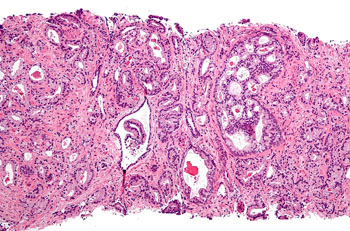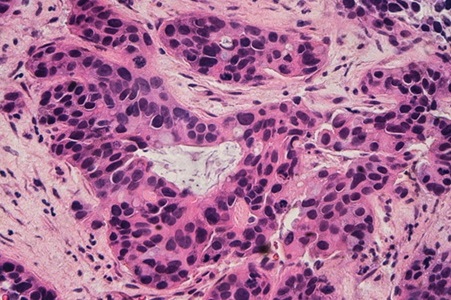Urine Protein Panels Identify Prostate Cancer and Differentiate between Tumors
By LabMedica International staff writers
Posted on 12 Jul 2016
A noninvasive diagnostic test for prostate cancer is based on protein signatures that can differentiate patients from healthy individuals and those with aggressive tumors from those with less dangerous growths.Posted on 12 Jul 2016
Investigators at the Ontario Institute for Cancer Research (Toronto, Canada) and their colleagues at the University Health Network (Toronto, Canada) and the Eastern Virginia Medical School (Norfolk, VA, USA) used advanced proteomics techniques to generate expression information for 624 proteins obtained in urine samples. Computational analyses reduced this number by identifying significantly differentially expressed proteins and finally characterized a set of six protein biomarkers for diagnosis and a set of seven protein biomarkers for prognosis of prostate cancer.

Image: A micrograph of a prostate adenocarcinoma, acinar type, the most common type of prostate cancer. Needle biopsy, H&E stain (Photo courtesy of Nephron).
"The amazing thing about these signatures is that their rate of accuracy is as good or better than the invasive tests that are used today, with far fewer drawbacks," said contributing author Dr. Paul Boutros, a principal investigator at the Ontario Institute for Cancer Research. "They can replace invasive, expensive, uncomfortable tests with something much easier and simpler. This type of cheap, non-invasive testing could allow patients to be screened much more frequently, allowing for more accurate monitoring of patients' non-aggressive cancer over time, sparing patients biopsies, imaging tests and even unnecessary surgeries."
The test was described in detail in a paper published in the June 28, 2016, online edition of the journal Nature Communications.
Related Links:
Ontario Institute for Cancer Research
University Health Network
Eastern Virginia Medical School














